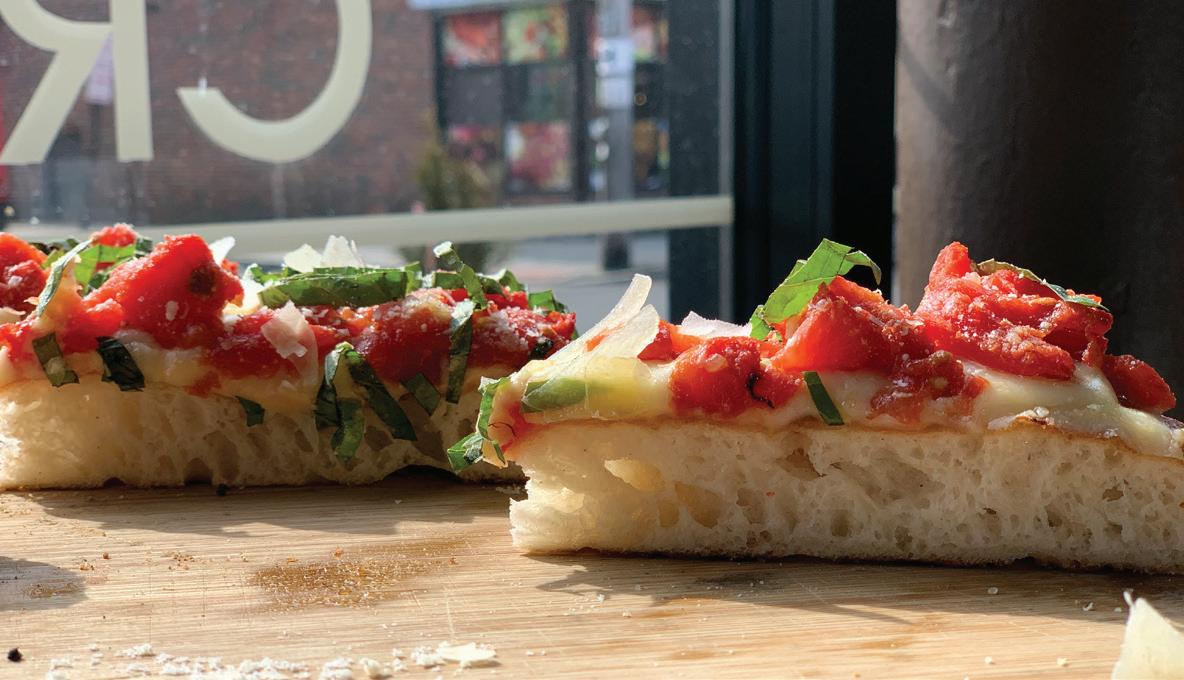
2 minute read
IS GOOD BUSINESS
BY BILLY MANZO JR. | PHOTOS BY SCOTT AND DONNA ERB, ERB PHOTOGRAPHY
I’mgoing to let you in on a little secret: My stomach is a wreck. I have to be very careful about what I eat. Not too heavy. Not too acidic. Not too who-knowswhat, depending on the day.
People in my family have always had stomach issues. They call it spastic colon or irritable bowel syndrome. I call it the “Italian stomach.” And it’s a pain in the neck. Eating the wrong foods can cause me pain or blow me up like a balloon. It’s not cool, it’s not fun, and it really limits a lot of the phenomenal foods out there that I can eat. But the one good thing about having this condition is that it has made me sensitive to others who share my grief and have to be careful about the things they eat, particularly people who have difficulty with gluten, such as those with celiac disease. And, unfortunately, a lot of people have it.

Celiac disease is estimated to affect one in 100 people worldwide. So many people have it in Italy that diagnosed celiacs receive vouchers to buy specifically produced glutenfree foods, up to 140 euros per month. (The Italian Celiac Association and the Italian government, by the way, have done an excellent job of educating restaurants on how to deal with celiac disease. There are even gluten-free meal options in schools and hospitals.) Here in the U.S., it is believed that 2.5 million Americans are undiagnosed and are at risk for longterm health complications. That’s a lot of sensitive stomachs. What exactly is celiac? According to the Celiac Disease Foundation, it’s an autoimmune disease where the ingestion of gluten leads to damage in the small intestine. When people with celiac disease eat gluten (a protein found in wheat, rye and barley), their body mounts an immune response that attacks the small intestine. These attacks damage the villi, small fingerlike projections that line the small intestine and promote nutrient absorption. When the villi get damaged, nutrients cannot be absorbed properly into the body.
When I founded Federal Hill Pizza, it was important to me that I create some form of gluten-free pizza so that those with celiac or gluten intolerance can go out and enjoy a good meal just like everyone else. With my background in science and with knowing what would get me sick, I was able to create a focaccia-style gluten-free (and also vegan) pizza that has been a strong seller for us over the past five years.
If you’re interested in getting into the gluten-free market (and you should be!), here are eight ways to get started:
1Research. If you don’t have a gluten-free recipe, surf the web and browse recipes that your consumer base might enjoy. I’ve seen crust recipes that use ingredients like chickpeas, butternut squash and quinoa. Remember, glutenfree customers don’t expect your gluten-free pizza to taste like your other pizza products, but it should have regional appeal. In other words, customers in California and customers in Florida, Chicago and New York are going to have completely different tastes for gluten-free food, so you have to come up with something that’s really cool for your client base. Go to your local wholesaler and see what they have. Consult with a nutritionist. Practice on family and friends. Invite gluten-free customers in the area to taste-test. And then once you find something that’s a hit, run with it.
For example, I’m not a cauliflower pizza guy. Yes, it’s glutenfree. Yes, it’s trendy. But I’m not a fan. We don’t carry it at Federal Hill Pizza, because I feel it’s already out there, and I’m more interested in creating a recipe that can’t be duplicated. However, if you know that your customer base enjoys cauliflower crust, then find a recipe that works for you and sell the heck out of it.










